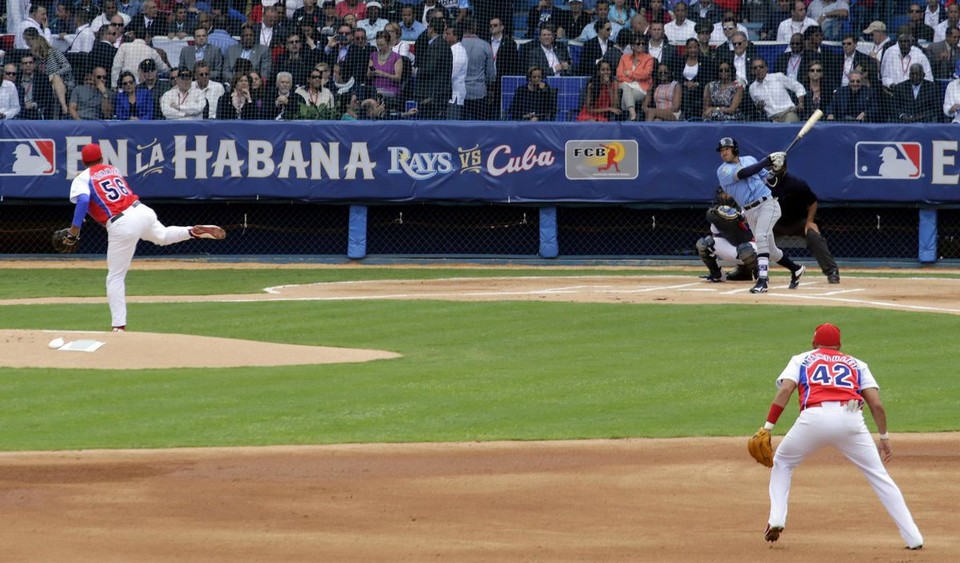An UNESCO World Heritage Site, a piece of history that is still well-preserved today. The scene that opens before your eyes will be a picture of Cuba from 200 years ago with cobblestone streets, magnificent buildings in Baroque and Neoclassical architecture style. Havana is the capital of Cuba also known as La Habana, a city with many strange things and is considered quite expensive for tourists despite the average local people’s life. Havana is one of the best places to visit in Cuba in particular and Caribbean in general. So, what to do and how to plan a budget perfect trip to Havana – the colorful and vibrant capital city of Cuba for the first-time? Let’s check out our Havana blog (Havana travel blog) with the fullest Havana travel guide (Havana guide, Havana tourist guide) from how to get, best time to come, where to stay, best places to visit and top things to do to find out the answer!
- 8 best places to visit in Cuba 2017
- What to buy in Cuba? — Top 11+ must-have souvenirs & best things to buy in Cuba
- Trinidad travel blog — How to spend a perfect day & things to do in Trinidad, Cuba
- 21+ photos that show the many sides of life on the streets of Havana
- Street life photos in Cuba through an iPhone lens

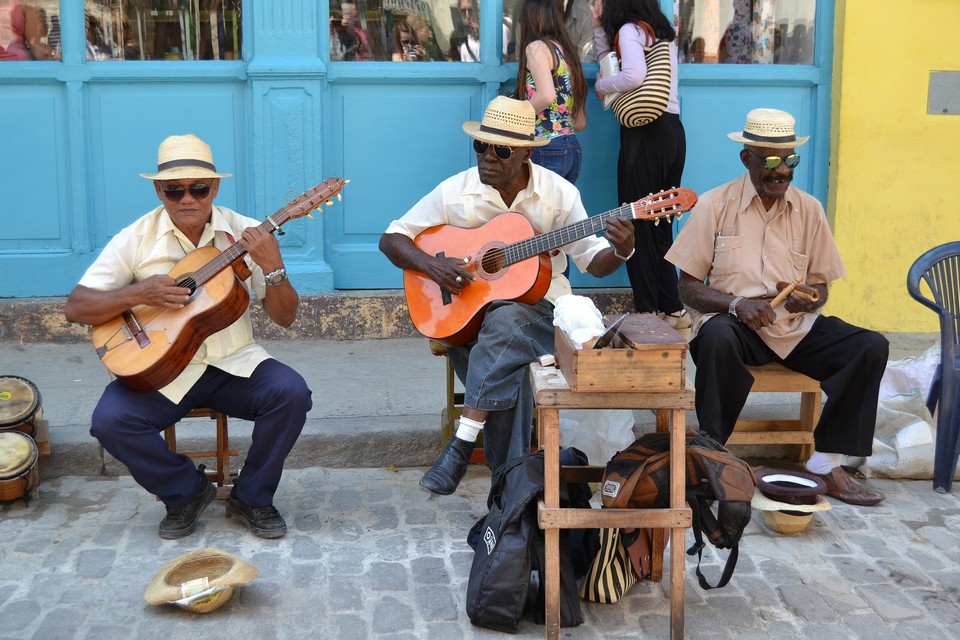
Havana – right from its name is tinged with ancient colors. The full name of this city in Spanish is La Habana, formerly San Cristóbal de la Habana. It is widely believed that the name of the city may be derived from Habaguanex – the name of an Indian chief who holds control of the area and is quoted by the painter Diego Velázquez in his submission to the King of Spain.


Havana blog: Overview of havana
Referring to Cuba’s tourist destinations, the first name must definitely be Havana. Not only known as the heart of Cuba, but Havana was also voted one of the most beautiful cities in the Caribbean and Latin America. Havana is a colorful ancient city, because everything here from buildings, houses to cars have an ancient look. You can even see old 1950s cars still running on the roads.

Currently, the capital of Havana still well preserves nearly 100 works of cultural and historical value, more than 800 environmental works and nearly 2,000 other value architectural works. Havana is the capital and one of the 14 provinces of Cuba. With a population of more than 2.2 million people and an area of 728.3 km², Havana is not only the political, cultural and economic center of Cuba but also the largest city in the Caribbean.

Previously, this city was fully named San Cristóbal de la Habana and was visited by Europeans by sea in 1509. By 1510 the first Spanish colonialists invaded and occupied Cuba. Havana was founded on 25/8/1515 on the south coast of the island near the present day town of Surgidero de Batabanó. The 17th century is considered the flourishing period of the capital La Habana when there are many religious structures built such as The convent of St Augustin, El Morro Castle, The chapel of Ermita del Humilladero, The Torreón de la Chorrera (Tower of la Chorrera)…

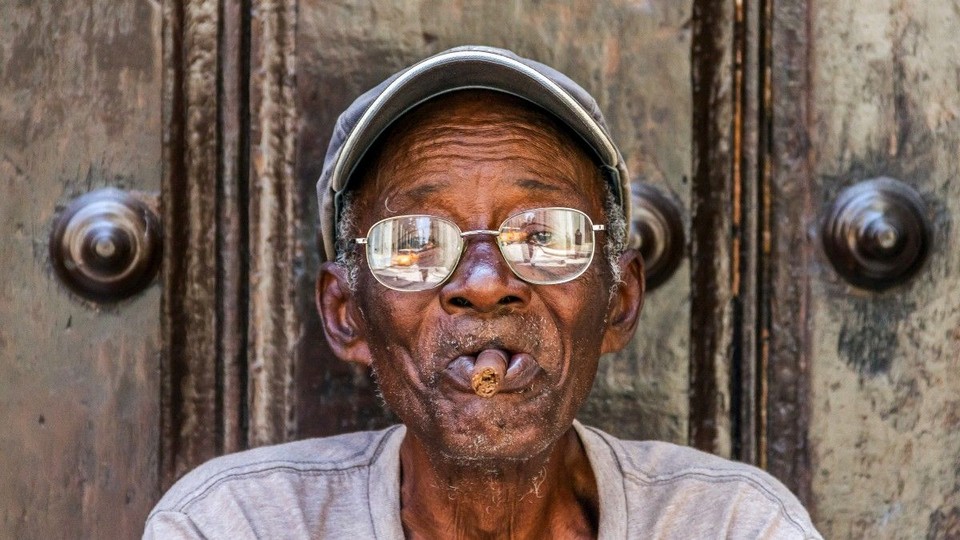
Many people say that Havana is ‘the City Stuck in Time’. This place records the imagination unlike anywhere else. Faded glamour is combined with colonial reconstruction with an irresistible color scene. Traveling to Havana, take the time to walk on El Malecon – the vivid coastal road, visit the old quarter of Havana and the Cathedral of San Cristobal, indulge in salsa dancing, explore flea markets and overnight parties… All will make colorful and unforgettable experiences for visitors.

Havana blog: When to visit?
Belonging to a tropical monsoon climate, but the weather in Cuba is extremely pleasant, not harsh. The average temperature in this country is only around 26 -27 degrees Celsius, and the best time to travel to Cuba is from September to December, which is also the time of season change from autumn to winter. At this time, Cuba is a bit cold, but there is no storm. Havana Jazz Festival also held in December is a huge music event of the city of Havana.

Like in Vietnam, Cuba climate is divided into 2 seasons, that is the rainy season lasts from May to October and the dry season lasts from November to April next year. The time of typhoon and flood usually starts from June to August, you should avoid going at this time.

Prepare clothing
In a country where the weather is quite pleasant, not too harsh, you can freely choose cool, colorful outfits to walk on the beach or participate in the vibrant dances here. Besides, all the personal belongings like towels, slippers, shampoo, etc. you should also bring. Because these items in Cuba are quite difficult to find, even hostels and hotels are not prepared for guests.
Besides clothes, remember to prepare dried food, instant noodles, etc. Because Cuban food is quite greasy, Asian guests will feel bored and unfamiliar. You should also bring common medicines such as cold medicine, stomach ache medicine and also necessary personal items such as sunscreen, towels, slippers, etc. In addition, if you are more careful you should bring toilet paper, device to switch plug from flat to round because there is no such thing in Cuba.

Havana travel blog: Some things to know before traveling to Cuba
Language
If you do not know, the official language of the Cuban people is Spanish, so if you know a few Spanish words or sentences, it will be more convenient for your trip. Most countries in the world choose English as its second language, but not so in Cuba, the number of people who know English is very small. If you go to some tourist destinations like Havana, Cienfuegos, communication in English is a little easier.
Money
When traveling to Cuba you need to know clearly the monetary system here, because there are up to 2 currencies. Specifically, this country uses CUC (short for Cuban Convertible Peso) for tourists and CUP for locals. The CUC is worth more than the CUP, 1 CUC is approximately equivalent to 1 USD and 1 CUP is approximately equivalent to 1,000 VND ($0.05). Thus, if you do not want to spend too much money, you should exchange to CUP to spend.

In Cuba, you can exchange them easily at airports, banks or money exchange shops. However, because the USD exchange rate here is quite low, you should prepare EUR in advance, to bring it to Cuba to exchange to Cuban currency. One more thing to note is that in Cuba, credit cards are accepted but extremely rare, if have, you must include your passport. Therefore, it is best to bring cash with you.
WiFi
If in most countries in Southeast Asia you can use free WiFi or use pocket WiFi device very easily, WiFi in Cuba is quite expensive. It is only free in parks, squares in cities and crowded centers. So, in case you want to share pictures of your trip with friends, buy scratchcards then go to free WiFi hotspots, select the ETECSA WiFi network and enter the card number and password.

If you want to buy scratch cards to access free WiFi, go to the post offices scattered throughout the big cities. Because a lot of people need to use the same service you do, it takes a little while for queueing. Then, there will be a few people like “decoy” in Vietnam will recommend you to buy scratch cards for 1.5-2 CUC, which is twice as expensive as buying at the post offices. Usually, it only will validate within 1 hour.

Security
You can rest assured, because Cuba is one of the countries with the lowest robbery rates in the world. Although at night, the streets are quite deserted, not bustling like in Vietnam, but not dangerous. Occasionally, you will come across men or prostitutes standing in the alleyways, however they only offer you service and are completely harmless.

Havana travel blog: How to get to Havana?
There is currently no direct flight from Vietnam to Havana, so you have to transit. Normally, from Vietnam to Cuba, there will be many choices about routes, depending on each flight you have to transit at 1 or 2 airports. Ideally, you should choose the Russian airline Aeroflot, transit in Moscow (Russia) or fly with Air France, transit in Paris. Currently, only these two airlines allow you to fly from Vietnam to Cuba with only one transit.

If you choose only one transit in Moscow (Moscow Airport), accept a little bit of trouble because the transit time is quite long. At Charles De Gaulle Airport (France) it is about 10 hours, the total flight time is around 34 hours, and at Moscow Airport (Russia) it is about 14 hours, the total flight is around 37 hours. You also check to see if you need a transit visa or not, if so, the procedure is quite simple. That is when you intend to stay in France or Russia to play for a few days, otherwise there is no need to apply for a visa.
But that is not the only option, because you can also choose to connect one in American countries such as the US, Mexico, Canada or connect twice in some Asian countries like Taiwan, China, South Korea. But normally, visitors will choose to transit once for good. Moreover, at present, the US and Cuba still have not normalized relations, so when you choose to transit, you must submit a visa to the U.S. Department of the Treasury, even though you have been granted a visa to Cuba before.
Havana travel guide: Transportation in Havana
In Havana, you can take a taxi if you want to visit places in the city, with prices ranging from 5-10 CUC/trip, and if you take a taxi from the airport to the city center, the price is quite expensive, about 25 CUC. To save money, you can choose to walk in the old town of Havana because this area is also quite small.

In Havana and Varadero there is a sightseeing Hop On Hop Off Habana Bus Tour that running through the attractions of the city for 5 CUC / day. In addition, you can rent a bicycle for cycling around is also very convenient because the streets in Cuba have their own bike lanes, bike rental price from 5 CUC / hour and 20 CUC / day.

To save more money, you can choose to travel on Three-wheeled taxis such as Coco, a typical vehicle very popular on the streets of Cuba and very popular in the cities of Havana, Camagüey, Holguin. Before you get on the vehicle, remember to ask price in advance because many drivers will ask for a high price when meeting tourists, they will usually ask for 2 CUC/trip or more depending on the distance.

In addition, you can also rent a car to travel by yourself, but the price will definitely be more expensive and you have to pay more as prescribed.
If you want to traveling between cities, you can go by bus which can be booked in advance online to avoid running out of tickets. Once you’ve already made your schedule, simply book your ticket, pay with an international card and they will send the ticket via email. Then, you just need to print out the ticket, be there 30 minutes in front of the counter for them to give you the pass. Each trip like that will cost about 15-25 CUC.

Havana blog: What to do and where to go?
Old Havana (La Habana Vieja)
Havana Old Quarter is not only located in the center of the capital but also an UNESCO World Heritage Site. This old town still retains 88 works of high historical and cultural value, 860 works of ecological value and 1,780 other architectural works. You can visit the small house – where Cuban national hero Jose Marti was born over 130 years ago or La Bodeguita Del Medio’s favorite pub on Empedrado Street by great writer Hemingway.

You can join some walking tours to explore Old Havana, including attractions such as the Havana Old Square – home to the city’s main Roman Catholic of Havana Cathedral (Catedral de San Cristobal), the Plaza de Armas where there are a lot of street vendors selling coins and souvenirs bearing the picture of Ernesto “Che” Guevara, and the sunny Plaza Vieja – a favorite place for Cuban students to play, or the cool and windy Plaza de San Francisco de Asís (Saint Francis of Assisi Square).

And finally one thing particularly interesting for tourists is old ladies smoking cigars in colorful clothes, ready to take your arm and leave a wonderful kiss on your cheek. The goal is for you to take pictures with them in a polite manner but you need to pay them a little money.
Revolution Square (Plaza de la Revolución)
Havana Revolution Square is a historical place you should not miss when coming to Cuba. This is the place that once kept a lot of events of the Communist Party of Cuba before. During the time of President Fidel Castro in power, an estimated one million Cubans gathered in this square on International Labour Day (May 1) to attend the parade. The José Martí Memorial and the steel carving portrait of Che Guevara are works that you will admire when you come to this square.

Address: Avenida Paseo, La Habana, Cuba
Area: 12 km²
Hours: Open 24 hours
Morro Castle (Castillo De Los Tres Reyes Del Morro)
One of the most famous places to visit in Havana that I want to introduce to you, is Morro castle. This is a massive architectural work, a large fortress with a towering lighthouse. Morro is known as a typical symbol of the capital city of Havana. Going inside the fortress, you not only discover the unique and impressive architecture, admire with your own eyes many artifacts of historical and special value, but also understand more about the foundation, development of the city.
Address: Havana, Cuba
Opened: 1589
Hours: 10AM–7PM
Function: Fortification
National Museum of Fine Arts
If you are wondering where to go in Havana, consider the National Museum of Fine Arts, for the chance to learn and explore the long history of this beautiful Cuba country. Visitors will have the opportunity to admire many famous and long-standing works of art by Cuban artists from the colonial period to today. In particular, Wifredo Lam’s works are always abstract and full of meaning.

Address: Havana, Cuba
Opened: April 28, 1913
Hours: 9AM–5PM/Sunday: 10AM–2PM/Monday: Closed
Museum of the City (Museo de la Ciudad)
Another interesting sightseeing spot in Havana, that is the Museo de la Ciudad (Museum of the City), which attracts the attention of many tourists. Because this place will reveal to you about the interesting history of the city of Havana.

When arriving at the city museum, the first spot you should come is the Hall of Heroic Cuba – The place contains many artifacts dating back to the revolution. The next is Espada cemetery, the resting place of famous French painter named Vermay. But the most highlighted place at the museum is probably the Salon de los Espejos (Hall of Mirrors) – A large room decorated with many old nineteenth-century mirrors. Besides, this house is also the place where ended up the Spanish rules which was enacted in 1899.

In addition, at the Museo de la Ciudad, there are still many other interesting things for you to explore such as Iglesia Parroquial Mayor Church, the ancient bronze statue of La Giraldilla…
Address: Cuba Tacón, La Habana, Cuba
Hours: 10:30AM–5PM/Sunday: 9AM–1PM/Monday: Closed
Callejón de Hamel Art Center
This is a art, cultural preservation area and the values of the people here which is extremely interesting and attractive. You can admire the street art, the permanent murals, attend the live music performance, dancing or even learn Rumba dancing here.
Visiting the city of Havana on old cars
The highlight as well as the specialty of Havana is that visitors can driving, sitting on old Cadillac, Ford, Chevrolet … cars from the 1950s that are still running on the streets with colorful colors. Old cars are everywhere in the city and we highly recommend visitors do not miss this exciting experience. These cars are also used for weddings, the groom picking up the bride on the road, towards the Capitol building, where tourists can come to see the car and feel nostalgic time.

Motorbike lovers also have the opportunity to gather at the Harley-Davidson club at the Nacional hotel to show off their classic motorbikes, usually held every Saturday afternoon.
Fusterlandia
Perhaps this is the tourist place that attracts the most visitors. Because Fusterlandia is known as an impressive art complex, with colorful, whimsical mosaics walls, fictional characters originating in Cuba, … all create an unique space. And this is also a beautiful photography spot in Havana that is interested by many young people.

Address: Havana, Cuba
Hours: 9:30AM–4PM
Chat with the artists
Heading to the art gallery of Taller Experimental de Grafica to chat with artists in Havana. Founded in 1962 under the guidance of Che, this place hosts dozens of artists who are friendly and want to interact with the public.
Or art lovers can wander along the 23rd street also known as La Rampa or the Ramp, where dozens of mosaics made by Cuban masters like Wilfredo Lam create a gallery on the sidewalk for visitors can admire them.
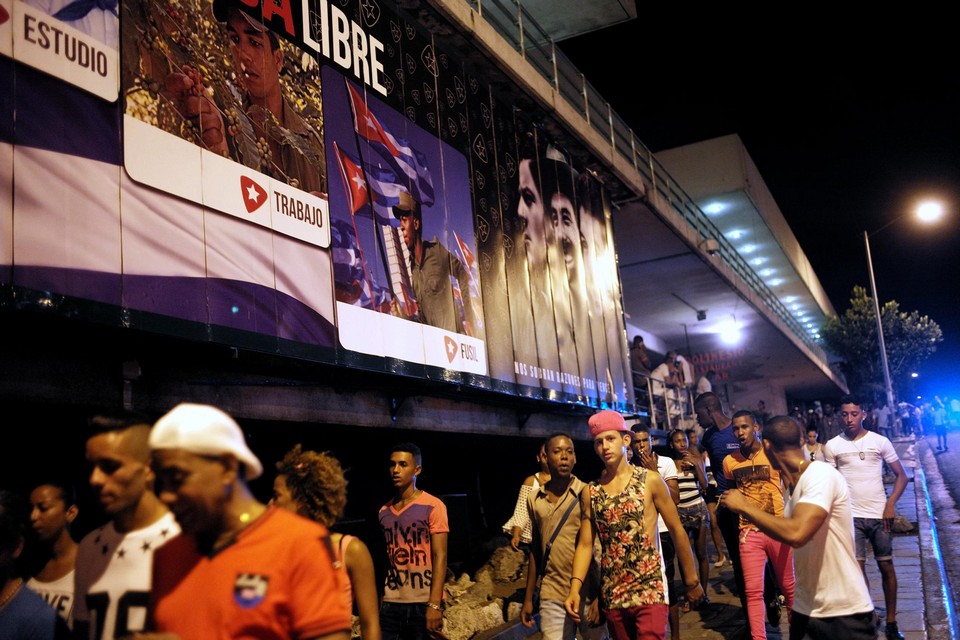
Rumba dancing on the street
Although still a backward country compared to other countries, Cubans still know how to make fun for themselves, simple from lively Rumba dances. Those are sexy dances mixed African and Spanish styles. Rumba are often primitive dances, impromptu but very satisfying. If you are a tourist, do not hesitate to immerse yourself in vibrant dances with the locals.

Try cigars in Cuba
Being famous for the best cigars in the world, so if you have come to Cuba in general or Havana in particular, in addition to bringing some cigars as gifts for your relatives, you can also try cigars directly in this country. Because Cuban cigar is made from delicious aroma of fresh tobacco leaves, many tourists come to Cuba just to enjoy cigars.
Visit Ernest Hemingway Museum
The writer Ernest Hemingway once praised Cuba: “People want to live on this island because the freshness of the morning makes it possible to work better and feel more comfortable anywhere else in the world”. And so there is no reason you can refuse Havana – the city of these pillars. The writer spent 7 years living in the city of Havana and the Ambos Mundos hotel, where he wrote his famous novel “For Whom the Bell Tolls”.

The room where Hemingway lived in the Ambos Mundos hotel has become a museum for visitors to visit. Later, he moved to live on a farm near Havana and this place has also been turned into a museum.
The famous small room 511 with simple furnishings and bookcases is full of his works translated into many languages around the world. It is known that every day, Hemingway went up there to eat breakfast and someday he stayed and wrote all day and night.

The writer also likes to walk in Cojimar, the west district of Havana, and here Hemingway met the man who inspired him to create the main character in his another famous novel “The Old Man and The Sea”.
Address: Finca Vigía Km. 12 ½, La Habana, Cuba
Opened: 1886
Hours: 10AM–4PM/Sunday: Closed
Watching a baseball game in Havana
Cubans are crazy about baseball and those who love the sport won’t want to miss out on Central Park which is the hottest spot of the city.
If you are a football lover you will know that most Spanish-speaking countries are fan of the sport of football. However, baseball is the most favorite sport in Cuba, because partly Cuba was once a US colony. That is manifested in that, most cities in Cuba have stadiums for baseball.
Beaches near in Havana
You should definitely not miss the beaches in this beautiful city. Havana beaches with clear blue water, white sand, the beaches are very clean and visitors also love to visit, have fun and swim and take part in water activities. Some best beaches near Havana you should go such as: Santa María del Mar for a Beach Party; Playa Boca Ciega: Escape the Crowds; Playa Guanabo: A True Charmer; Playa Bacuranao: Going the (Short) Distance; Playa El Salado: The Saltiest Salt Water.

Malecon Road
The road has a stone wall used to prevent waves about 6km long running from the old town to the Almendares river. It runs through many large squares where performances, festivals and outdoor events are held, and is a favorite daily gathering and promenade of the people of the capital, especially when the sunset falls that creating a romantic scene, many couples choose this road for their dating.
On the weekends on 23rd and Malecon streets, these 2 places are really full of partying atmosphere in a mellow and vibrant atmosphere on the concrete paved road, Paseo Avenue meets Florida Strait.
Vibrant nightlife
Tropicana Club
A revolution broke out that caused many of Hanava’s clubs to be shut down, but Tropicana survived and became the largest club in Havana. Over 200 performers in glamorous costumes dance on retro music background. The décor is not too formal, but one thing is for sure, when you come here you must bring a relatively large amount of money.
Havana: Cabaret Tropicana Admission Ticket
Address: 72 A, La Habana, Cuba
Hours: Open 24 hours
Founded: 1939
Casa de la Musica de Miramar Club
This is Havana’s biggest dance club, which attracts fans who can really burn the stage every night. The club owner is not afraid to spend a large amount of money to invite foreign artists, famous Cuban bands to come here to perform.

Address: 20, La Habana, Cuba
Havana travel guide: What to eat?
Cuban Black Bean Soup
This is a traditional Cuban dish, very popular and seems to be very popular in the life of the people of this country. Black bean soup is a dish made from black beans, butter, and oregano vegetables, pepper, bay leaf… that are all stewed until cooked. Some places people often choose to eat black bean soup with bacon. If you love Cuban cuisine, it will be very interesting to try it once.
Cuban Sandwich
The sandwich is food you cannot miss while traveling in Cuba, a hot, crispy sandwich with pork, chicken, mojo sauce and cheese inside.
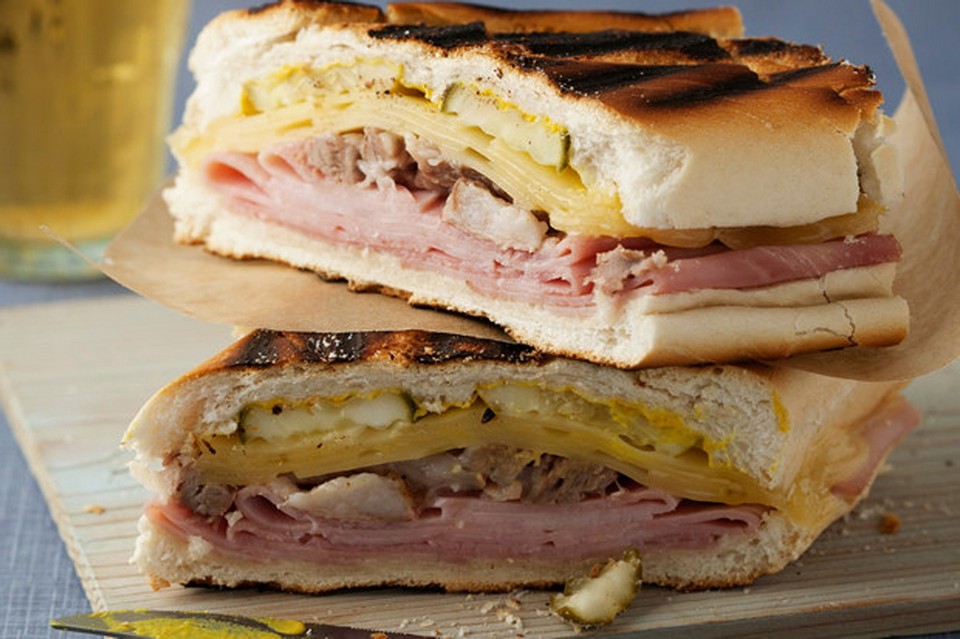
Churros
If you know about Vietnamese Youtiao (Fried Dough Sticks), Churros is similar, it is made from sugar, salt and flour then deep fried.

Guava BBQ Ribs
You really can’t resist this savory dish in Cuba. The ribs are marinated with a mixture of spices before being grilled to have a stronger aroma and flavor. The soft, fragrant ribs of garlic, chili, onion, and laurel leaves and poured with red BBQ sauce will awaken all your senses.
Tamales
Try the Tamales corn cake once to make sure you will be fascinated immediately, it is a corn cake made from cornstarch, ground corn, minced pork and margarine. To make this dish, they will mix the cornstarch with minced pork, then wrap it in corn husks or plantain leaves, tie it tightly and boil in dilute salt water.

Tostone
Tostone, also known as fried banana, is another favorite dish in Cuba. After slicing each piece to taste, the sliced banana will be seasoned and fried through 2 times of oil. The first time it will fry quickly that the bananas are cooked evenly, the second time with deep fried to create a golden crust and crispy on the outside. When enjoying, it will be sprinkled with a little salt on top to create the balance flavor of the dish.

Paella Habana
This is a mixed seafood rice dish. The type of rice used for processing is rice paste, cooked with mussels, squid, shrimp, whole clams, peas, turmeric, etc.
The color of the dish is very eye-catching because of the bright yellow of turmeric along with the green color of vegetables and the red color of seafood. In addition, seafood also makes the rice taste sweet, the more you eat it, the more you like it.

Mojito Cocktail
Mojito is a very famous drink in Cuba. This drink is a wonderful blend of Rhum liquor and lemon soda with mint leaves, a bit of salt to creating a very seductive taste.

Havana blog: What to buy as a gift when traveling to Havana?
Rhum liquor
While was still a colony, Cuba was considered the most delicious and famous producer of Rhum in the world. That is why Cuban Rhum brand has a certain position in the world spirits market. Referring the best Rhum, it is Rhum Bacardi Gold. Thanks to its excellent quality, Rhum Bacardi Gold is selected to create a wide range of fine cocktails, mixed with soda or used as ingredients for baking and seasoning. It possess a very distinctive amber color, with unique flavors of vanilla, banana, caramel and oak perfume.
Rhum is a perfect gift to bring back. If you want more choices, you can look to supermarkets in Cuba to buy many types of Rhum such as Añejo blanco, Añejo 3 años, Añejo especial, Añejo Reserva, Añejo 7 años, etc …
Cigar
Cigars are what I think of right after Rhum, because it is a characteristic of Cuba. Cuba has long been known for the most famous tobacco farms in the world, especially Cuban cigars possessing a very special taste, delicious and unlike any other cigars. If you have a loved one who loves cigars, then there is no reason not to bring a few boxes as gifts, affordable but meaningful.

Paintings
As you may not know, there are many paintings in Cuba, because Cuba is also a country with a large number of artists that no Latin American country can keep up with. To choose to buy paintings, you should go to Havana Vieja (Old Havana), where you will see thousands of colorful paintings. You can choose a painting you like or ask the artist to paint a picture according to your idea, they will be very happy.

Clothes and caps with Cuban icons
Show your love for Cuba by buying hats and shirts with Che Guevara portrait or “In Love Cuba” words. T-shirts, hats are probably the most chosen gifts in Cuba. Latin-style shirts are comfortable and simple, but also very polite. You can choose from a variety of styles from casual to high-end.

Souvenirs, handicrafts
If you want to buy souvenirs, you can choose bracelets, cigar boxes or vintage car models, all of which are meticulously carved by Cuban artisans. In addition, Cuba also sells a lot of things such as Wine Racks, Wine Bottle Stoppers, etc … Or Cuba also sells a lot of effective drugs and food supplements such as vidatox, marine drugs, algae, ppg, etc.

Havana travel blog: Where to stay?
When you book Cuba package tours, they will book 3-4 star hotel for you. But if you traveling alone, you should choose to stay in a homestay. However, those will be the rooms are rented out by Cuban families, the price will be very affordable.
Cuba is very lack of 5-star hotels. If you have a abundant budget, you should think about book luxury hotel rooms or resorts, with more expensive room rates, but there will be premium services.
Below we recommend more best cheap, budget, mid-range and upscale hotels with good ratings and reviews you can refer to.
- Saratoga Hotel, a top rated 4-star hotel with room rates from $213/night (Check rates Booking.com).
- Hotel Boutique Casavana, a top rated 4-star hotel with room rates from $79/night (Check rates on Booking.com).
- Havana Dream, a top rated 5-star hotel with room rates from $170/night (Check rates on Booking.com).
- Residencia Santa Clara, a top rated 4-star hotel with room rates from $80/night (Check rates on Booking.com).

Not being invested in tourism as much as like other countries in Asia, in fact, hotels in Cuba are not very luxurious and comfortable. This is also partly due to the results of war. In return, the people are quite friendly, hospitable and the living space is relatively cozy. You can choose between a state-run hotel or a casa (homestay) depending on your needs and financial conditions. That is also the reason that when traveling to Cuba, you should not ask for a luxurious and modern accommodation. However, you still possible to book beautiful rooms but the price is not too expensive. You can find more hotels in this city on Booking.com.

Some best day tours, trips, activities and transfer services, tickets in, from and to Havana you can refer to
- Havana City Tour
- Welcome to Havana: Private Tour with a Local
- Havana: Full-Day Tour From Varadero
- Discover Old Havana: Small Group Walking Tour with Lunch
- Havana: Panoramic City Tour with Lunch
- Havana: Ernest Hemingway Tour with Cocktails and Cuban Lunch
- Havana: Old Havana Walking Tour with Cocotaxi Ride
- Havana: Cabaret Tropicana Admission Ticket
- From Havana: Trinidad and Cienfuegos Private Tour
- Havana: On the Trail of Ernest Hemingway Tour
Are you looking for more top things to do in Havana: Tours, activities, attractions and other things? Let’s check it out here.































![10 best airports in Asia in 2016 [RANKED] kuala-lumpur-international-airport-best airports in asia in 2016 by skytrax ratings](https://livingnomads.com/wp-content/uploads/2016/08/29/kuala-lumpur-international-airport-best-airports-in-asia-in-2016-by-skytrax-ratings-218x150.jpg)
























